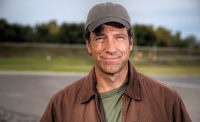 We could see history being made here. Many DC sources tell us the same thing: Dr. Michaels “loves” his job, according to one source, and has made it known in DC he wants to stay on. It would be the first time in OSHA’s 40+ year history that an OSHA chief has stayed in place for a president’s second term.
We could see history being made here. Many DC sources tell us the same thing: Dr. Michaels “loves” his job, according to one source, and has made it known in DC he wants to stay on. It would be the first time in OSHA’s 40+ year history that an OSHA chief has stayed in place for a president’s second term.
ISHN is told Dr. Michaels is motivated to stay on in order to take care of unfinished business. First and foremost this means the Injury and Illness Prevention Program. His priorities also include modernizing the agency’s recordkeeping system by going electronic, and perhaps giving another go at updating hundreds of permissible exposure limits.
OSHA, professional EHS societies, and reps from industry have tried unsuccessfully in the past decade to collaborate on a way around legal obstacles to update PELs that are decades old. OSHA this time may take a targeted, prioritized approach, and focus on updating perhaps a dozen PELs.
DC sources with connections to high levels at OSHA are divided about the prospects for I2P2. Several say a proposed rule could be out before 2014. Others say it will never see the light of day.
Another thorny issue: what to do about OSHA’s Voluntary Protection Program, or VPP. Aaron Trippler, government affairs director for the American Industrial Hygiene Association, expects moves to either make VPP self-sustaining by charging fees, or eliminating it.
Sources tell ISHN that most of the top level OSHA officials want to stay on. This includes Jordan Barab, a Michaels deputy whose jobs with organized labor date back to 1982 and is the man who steered the process that produced the ill-fated ergo standard 2000, which was overturned by Congress months later in early 2001
Another key player who apparently wants to stay is Deb Berkowitz, chief of staff for OSHA. Her work with organized labor dates back to 1979.
Now, several caveats: 1) It is protocol for all federal political appointees to hand in letters of resignation between a president’s first and second terms. Some are accepted, some are rejected and the official then remains in place. 2) Whether Dr. Michaels stays is tied to a degree to whether his boss, Labor Secretary Hilda Solis stays on. DC sources ISHN interviewed the day after the election are divided on Solis’s future. If she leaves, a new secretary might well want to appoint his or her own people for agencies such as OSHA. 3) Dr. Michaels has been on a leave of absence from his professorship at George Washington University in DC. Sources are unclear if Michaels can negotiate a second leave, which is not common, if he wants tenure at GW and so returns to academia, or decides to cut ties with GW to stay on at OSHA.
What Dr. Michaels decides to do, or is told to do, should play out in the next 2-3 months.
One question: what happens to I2P2 if Michaels leaves? It is his pet project.
Note: Most ISHN interviews with Washington DC sources, a number who have worked for OSHA during their careers, are conducted with the understanding that information and quotes will not be attributed. This is because the occupational safety and health world is very small in DC, and sources do not want to damage relationships and access to top OSHA officials.








.jpg?t=1721257160)
